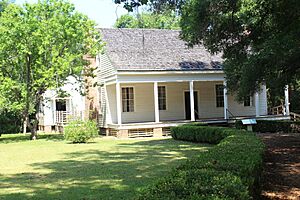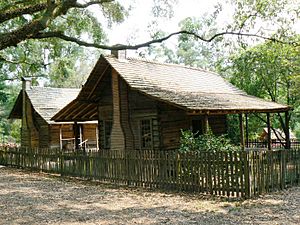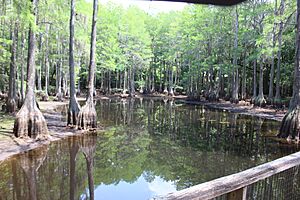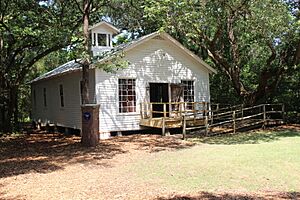Tallahassee Museum facts for kids

Entrance to Tallahassee Museum
|
|
| Lua error in Module:Location_map at line 420: attempt to index field 'wikibase' (a nil value). | |
| Established | 1962 |
|---|---|
| Location | Tallahassee, Florida |
The Tallahassee Museum is a special place in Tallahassee, Florida. It's a non-profit museum, which means it's run by a group that uses its money to help the museum grow, not to make a profit. Its main goal is to teach everyone about the amazing nature and history of the "Big Bend" area. This area is where the Florida panhandle connects to the main part of Florida. Tallahassee, the capital city of Florida, is right in the middle of this interesting region.
Contents
History of the Museum
Discussions about creating a museum started in 1957. This led to the opening of the "Tallahassee Junior Museum." Later, its name was changed to the "Tallahassee Museum." Even today, some people still call it by its older name. In 1962, the museum moved to its current large home. It sits on 52 acres (about 210,000 square meters) of land. This area is located between Lakes Bradford and Hiawatha in Leon County, Florida.
Exploring Museum Exhibits
A great thing about the Tallahassee Museum is how many different exhibits it has. It also has many spaces that can be used for various activities.
Big Bend Farm: A Step Back in Time
A big part of the museum grounds shows what rural life was like in North Florida around the year 1880. Here, you can see old homes and gardens. There are also farm buildings with real farm animals. You can even find a gristmill and a turpentine commissary. These buildings show how people lived and worked long ago.

Wildlife Florida: Meet the Animals
Another large section of the museum is dedicated to Florida's wildlife. Many animals live in big, natural-looking areas. These areas are made to be like their homes in the wild. You can see amazing animals like black bears, white-tailed deer, and bobcats. The museum also helps protect endangered species. These include red wolves and Florida panthers. There are also several aviaries (places for birds) and a snake exhibit. You can also find small mammals and a special "guest" animal habitat.
Twice a day, the museum hosts "Animal Encounters." During these events, a staff member shows an animal and teaches you about it. They might show birds of prey, snakes, a rabbit, or even a skunk. Many of the animals used for these educational programs were once injured. For example, many birds of prey were hurt. Because these animals cannot survive on their own in the wild, they are cared for at the museum. They help teach visitors about wildlife.
Old Florida: Historic Buildings
The "Old Florida" part of the museum features buildings that are important to history. One is the 19th-century Bellevue Plantation. This was once the home of Catherine Murat. She was related to George Washington and married to Napoleon Bonaparte's nephew, Achille Murat. You can also see the 1937 Bethlehem Missionary Baptist Church. This church was started by Rev. James Page, who was a slave preacher. Another building is the 1897 Concord School house. It reminds us of early schools for African-American children. There is also a 1920s caboose, which is the last car on a train.
Florida & Beyond: Science, Art, and Discovery
This section has several interesting areas. The Fleischmann Natural Science Building has two freshwater aquariums. It also has places for bird watching. The Phipps Gallery shows different exhibits of local art, culture, and history. The Discovery Center is a fun, interactive area for families. It has hands-on exhibits where you can learn about the nature and culture of North Florida.
Other Museum Features
The museum also has several nature trails for you to explore. One trail includes a boardwalk that goes over a cypress habitat. This area is usually flooded with water. There are also special buildings for indoor exhibits and workspaces. In 2011, the museum became home to 23 dinosaur sculptures. These amazing sculptures were created by artist Jim Gary. You can find them scattered all around the museum grounds.




